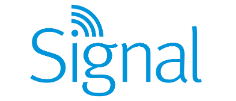Long gone are the days of relying on traditional sources of intelligence on the front line of a disaster - phone calls, emails sent from laptops, even SMS messages.
In today’s world of the Internet, Smartphone and Social Media there is an intelligence source in the hands of almost every citizen.
This abundance of intelligence has been highlighted no more so than during the 2017 Chilean wildfires.
With the fires covering such a vast land mass and in such a short period of time, emergency response teams needed a free and fast flow of intelligence to help protect towns - saving lives and property.
Aerial shot of the wildfire devastation
So, What's The Resource?
The photos and videos posted on Social Media provide enhanced situational awareness to emergency response teams. This level of insight was near on impossible to generate or acquire before the rise of social networks.
Why Photos & Videos Shared on Social Media are the Best Freely Available Source of Wildfire Intelligence Today
Photos often tell a better story, especially in a wildfire. The size of flames, what’s on fire, where fires are and how accessible they might be are just some of the reasons photos shared on Twitter and Instagram are such a useful source of intelligence.
Here are some different ways emergency response teams can use photos to enhance their situational awareness during a wildfire.
1. Help identify potential flare ups or new wildfires
Tracking images using Geo location data (which is available on some social media networks) can not only help identify new areas where fire is spreading but also areas where fires have restarted.
2. Check if Emergency Response teams are at the scene
Photos often include people and when emergency services turn up, it’s usually a time when citizens start taking snaps. This makes it easy for command centers to know when teams are at the scene and sometimes the potential issues they may be facing.
3. Check for casualties and if medical assistance is required
Bystanders may take pictures of injured people being helped by other civilians. This can act as an alert to deploy medical staff. Or if medical staff are already at the scene it may help identify if enough have been deployed.
4. Understand the size and scale of the fire at specific locations
Imagery from media stations is often a good source in helping determine the size and scale of a wildfire. Helicopters and drones provide a unique point of view.
While photos at ground level can help complete the picture for emergency teams.
5. Check to see if property or infrastructure is at risk from the wildfire
When wildfires start encroaching on built up areas images posted on social media can provide early warning signs that the fire may be spreading into communities or across roads and railway tracks.
As you can see, if you're an emergency management professional, you should be using the images freely available on social media to help aid your efforts during a wildfire (and other emergencies), giving you a better chance of preventing further damage and protecting the public.
"Nuestros pensamientos están con la gente de Chile que ha sido afectada por los incendios forestales." - the Signal Team









































































